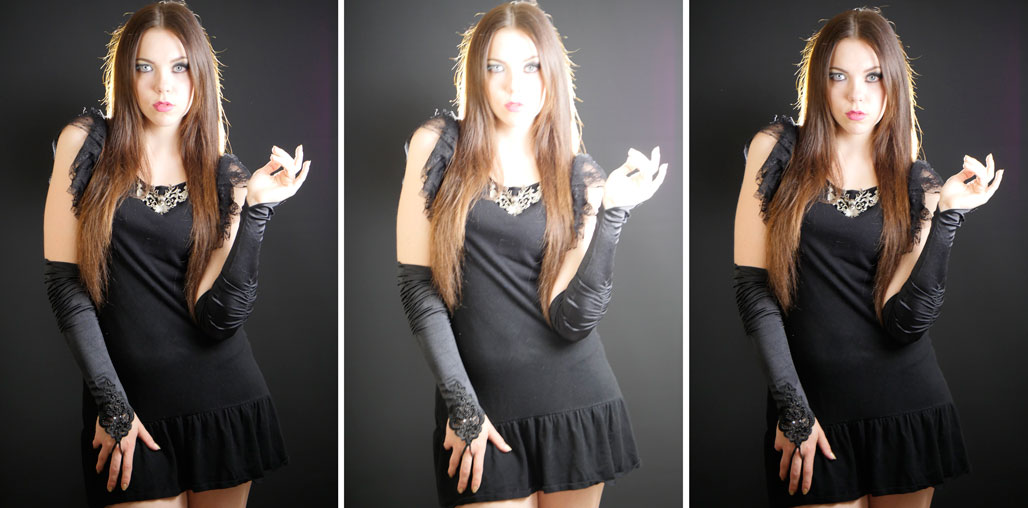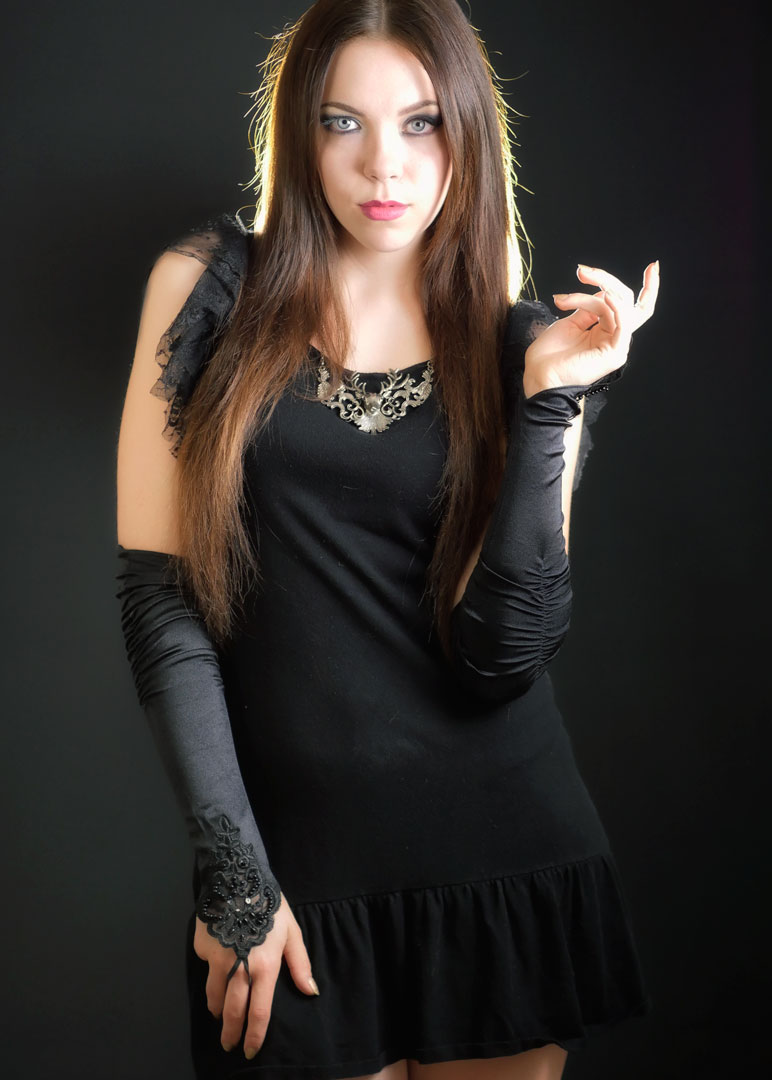Today’s Post by Joe Farace
Here are a few common questions I get whenever writing a post about using LED lighting for portraits:
- How bright are they?
- Are they really daylight balanced?
- What’s the quality of the light>
The answer to question #1 is not very but as a technology LED studio lights are getting better every day. Many LED studio lights are rated in lux (luminous flux), a definition that doesn’t help most of us understand their intensity, especially how it affects the inverse square rule that “an object twice the distance from a light source will receive a quarter of the illumination.”
 And there other problems lurking in some LED light sources: Take the sequence at left, for example. It’s not a bracketed series because all three of these unedited frames were made at the same exposure—1/60 sec at f/2/8 and ISO 800. That’s because some LEDs lights exhibit a problem called Pulse Width Modulation that causes flickering making them appear to be producing continuous light when specific elements within the light source may not be alight and in fact are flickering off.
And there other problems lurking in some LED light sources: Take the sequence at left, for example. It’s not a bracketed series because all three of these unedited frames were made at the same exposure—1/60 sec at f/2/8 and ISO 800. That’s because some LEDs lights exhibit a problem called Pulse Width Modulation that causes flickering making them appear to be producing continuous light when specific elements within the light source may not be alight and in fact are flickering off.
Experience in the movie industry show that most exposure meters are not balanced to read LED light output and that can sometimes result in inconsistent exposure. One way around that by using a meter, such as the Sekonic C-800 SpectroMaster Spectrometer, that’s capable of reading all kinds of light sources whether they’re LED, flash, incandescent, HMI, fluorescent or even natural light.
 When shooting with mirrorless cameras or Live View with a DSLR, you’ll have an advantage because you will be able to immediately see exposure variations right away and you can re-shoot the portrait if necessary.
When shooting with mirrorless cameras or Live View with a DSLR, you’ll have an advantage because you will be able to immediately see exposure variations right away and you can re-shoot the portrait if necessary.
The answer to question #2 is, as my friend Rick Sammon often says, “it depends.” Some LED lights are daylight balanced and some models allow you to adjust their color balance, while others say they are but are not. The Rotolight Anova Pro 2 Bi-Color that I used to own offers light in variable color temperatures from 3150 to 6300K. To analyze the quality of lights when testing LED lighting equipment for this blog, I use a Rotolight Spectroscope. This device is similar to spectroscopes that are used by rock and gem collectors to analyze the quality of light being reflected by a stone and are available on eBay at affordable prices.
Lastly but maybe more importantly to the portrait photographer is that the quality of the light output from most LED light sources may can seem harsh and in the past some of my portrait subjects complained about it and yet it didn’t bother others. When that happens, I’ve used a lighting modifier, like a shoot-through umbrella or softbox to soften the light and that seems to do the trick.
How I made this shot: I photographed Sarah Dean in my 11×15-foot home studio with a Panasonic Lumix GH4 and Olympus 45mm f/1.8 lens. Lighting was provided by two Flashpoint LED lights. The backdrop was a 5×7-foot black Savage Infinity vinyl background suspended from my falling-apart JTL background stands. Exposure was 1/60 sec at f/2.8 and ISO 800.
 If you’re interested in learning how I shoot portraits and how I use cameras, lenses and lighting in my in-home studio and on location, please pick up a copy of Studio Lighting Anywhere which is available new from Amazon.com for $31.88 or used starting around four bucks, as I write this. The Kindle version is $19.99 for those preferring a digital format.
If you’re interested in learning how I shoot portraits and how I use cameras, lenses and lighting in my in-home studio and on location, please pick up a copy of Studio Lighting Anywhere which is available new from Amazon.com for $31.88 or used starting around four bucks, as I write this. The Kindle version is $19.99 for those preferring a digital format.